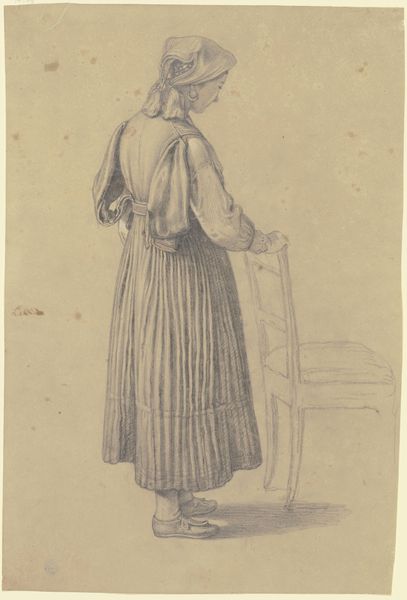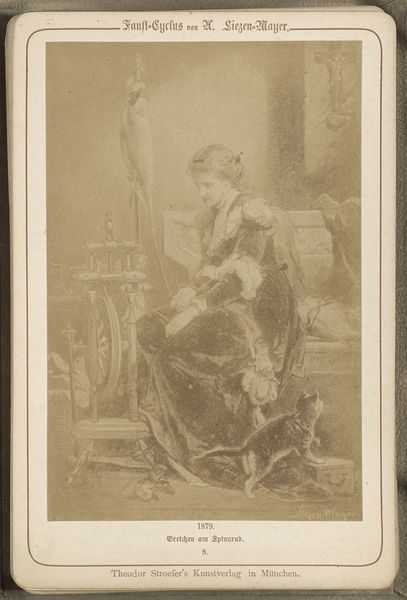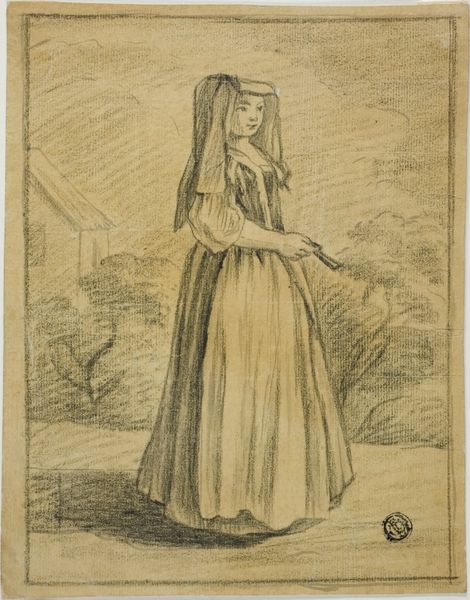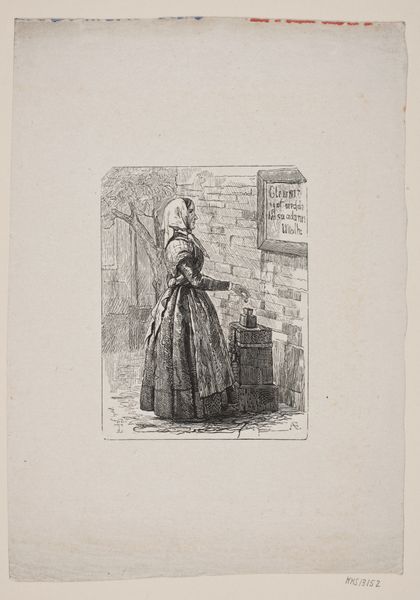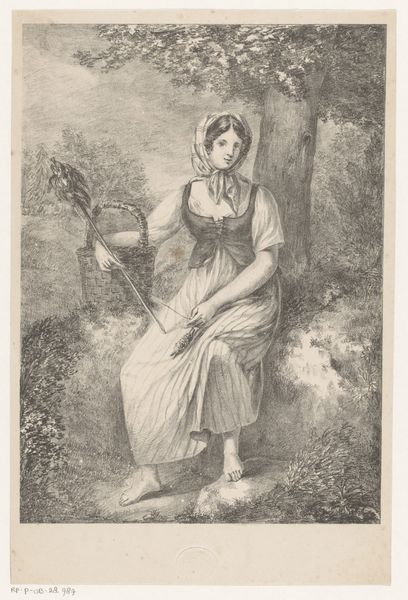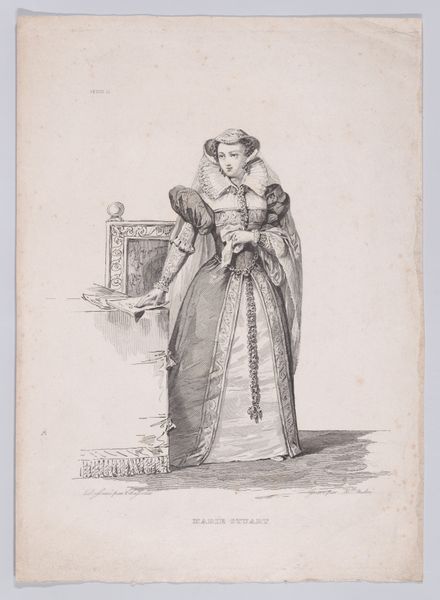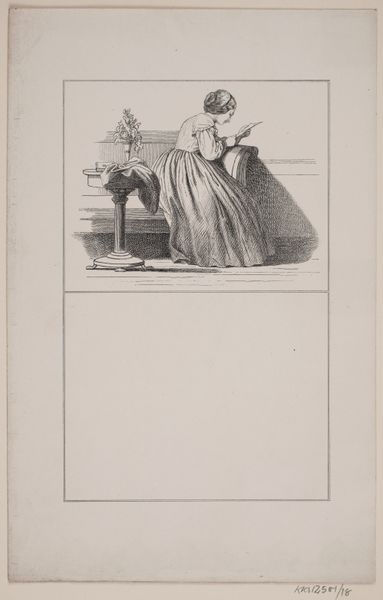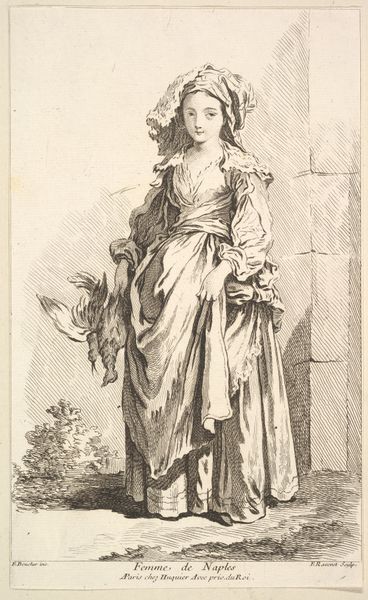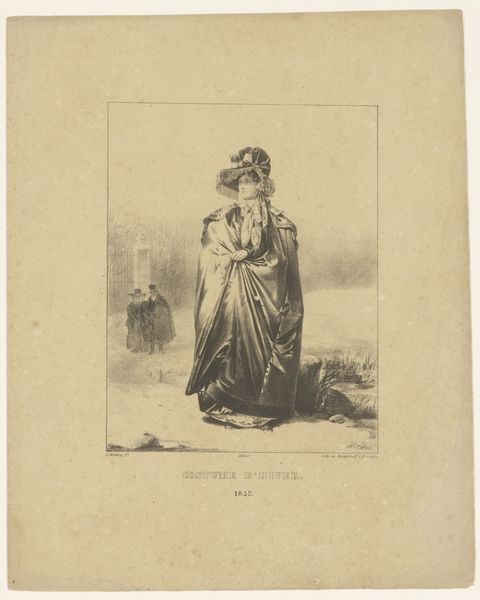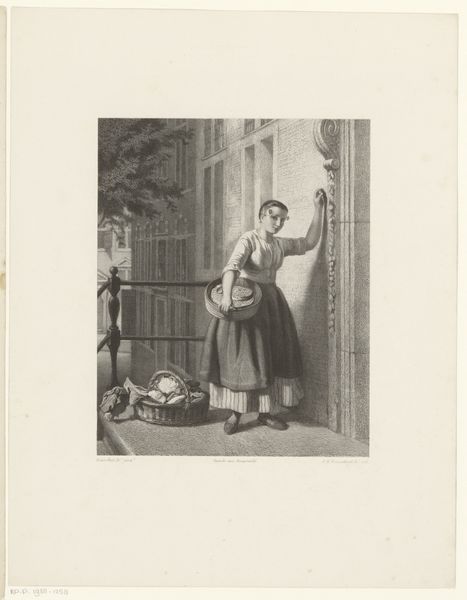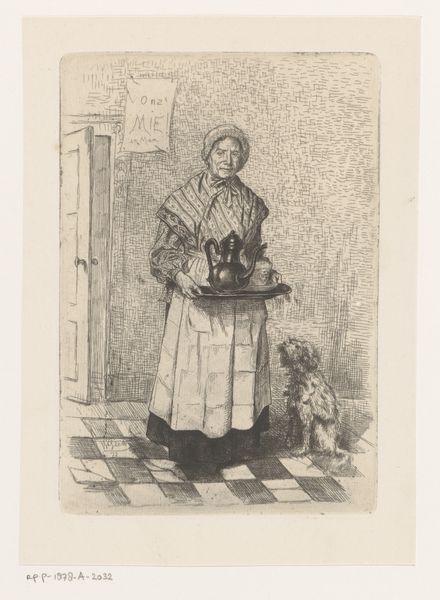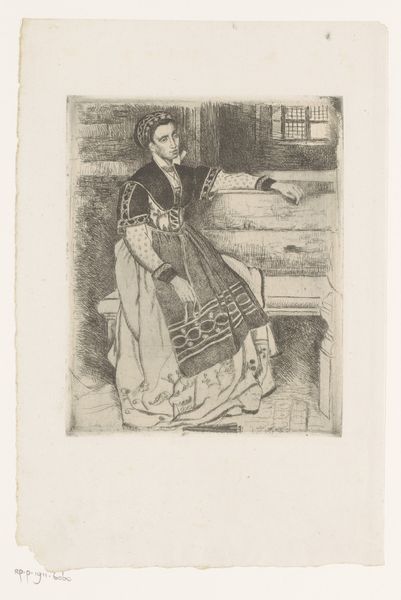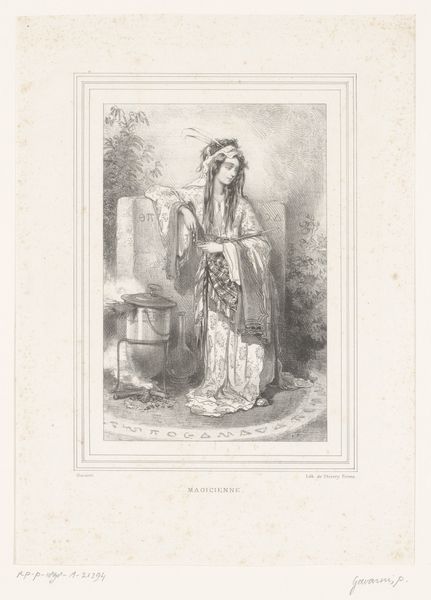
Fotoreproductie van (vermoedelijk) een tekening getiteld 'Gretchen bij de bron' 1878
0:00
0:00
Dimensions: height 138 mm, width 93 mm, height 172 mm, width 113 mm
Copyright: Rijks Museum: Open Domain
Curator: This piece, dated 1878, is a photogravure reproduction of a drawing likely titled 'Gretchen bei die Quelle'. The original artwork seems to be of German origin. The print on paper gives a unique visual quality to it. Editor: The mood of this artwork is incredibly melancholic, almost sorrowful. I'm immediately drawn to the subdued palette, which is fitting for a work of this age. Curator: The subject here is particularly intriguing. The figure of Gretchen, with her downcast gaze, is imbued with socio-political dimensions regarding female labor and its burdens during that period. Note how this relates to representations of women across time. Editor: The fountain, which appears to be ornately crafted, adds an interesting element of manufactured output against Gretchen's dress. The means of artistic production, the materials – paper, ink, the printing process itself, also are notable. Were there restrictions regarding access to material during that period? Curator: Yes, material constraints inevitably shaped artistic expression, often in ways that deepened its ties to the lives of everyday people, and even to the natural environment. The lack of access may have indirectly pushed more art into other forms or interpretations, don't you think? It could affect the artistic value based on class. Editor: Exactly. The very act of using, say, less expensive paper and employing simpler printmaking techniques tells us so much about artistic and even social value and affordability. The materials aren't just a medium here; they become embedded social narratives within this art. Curator: Looking through this lens, we can reframe Romanticism, moving away from merely idealised visions toward the examination of real materials in connection with human hands that produced them. Editor: I agree. Shifting our focus to the artistic creation reveals production networks, labor hierarchies, resource allocation, and its place on our current landscape. The act of reproduction too, alters its own placement through consumer access and historical perception. Curator: Ultimately, examining artworks through diverse analytical pathways opens new insights and prompts a dialogue of the world's historical artistic legacy. Editor: Exactly, let us consider the materiality and the methods by which this and other artworks arrive, interact, and are produced by the cultures from which it stems.
Comments
No comments
Be the first to comment and join the conversation on the ultimate creative platform.
